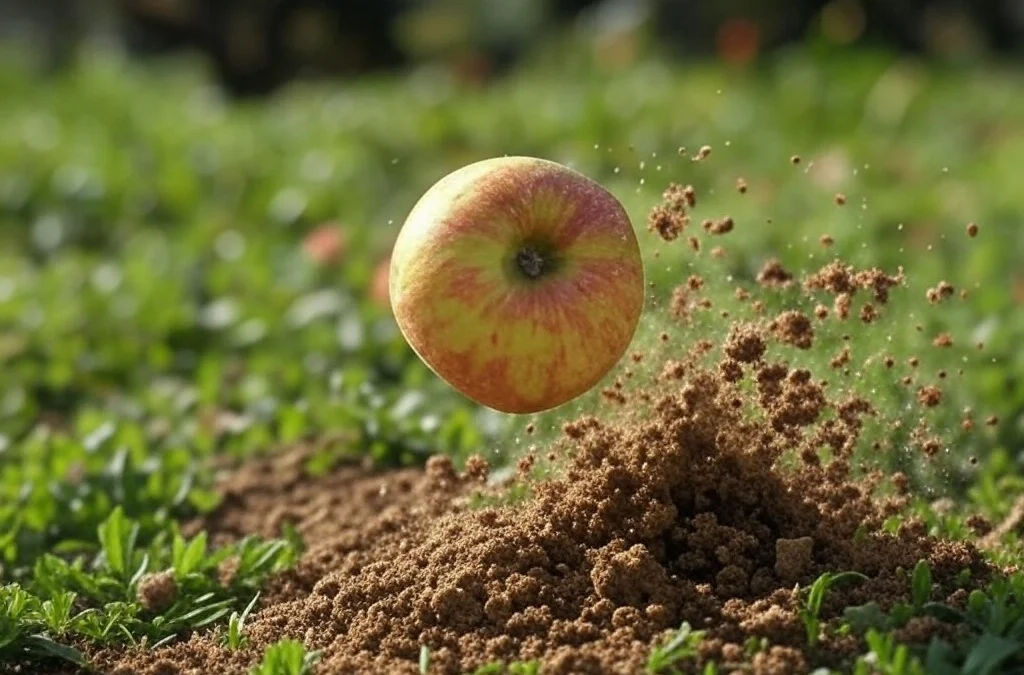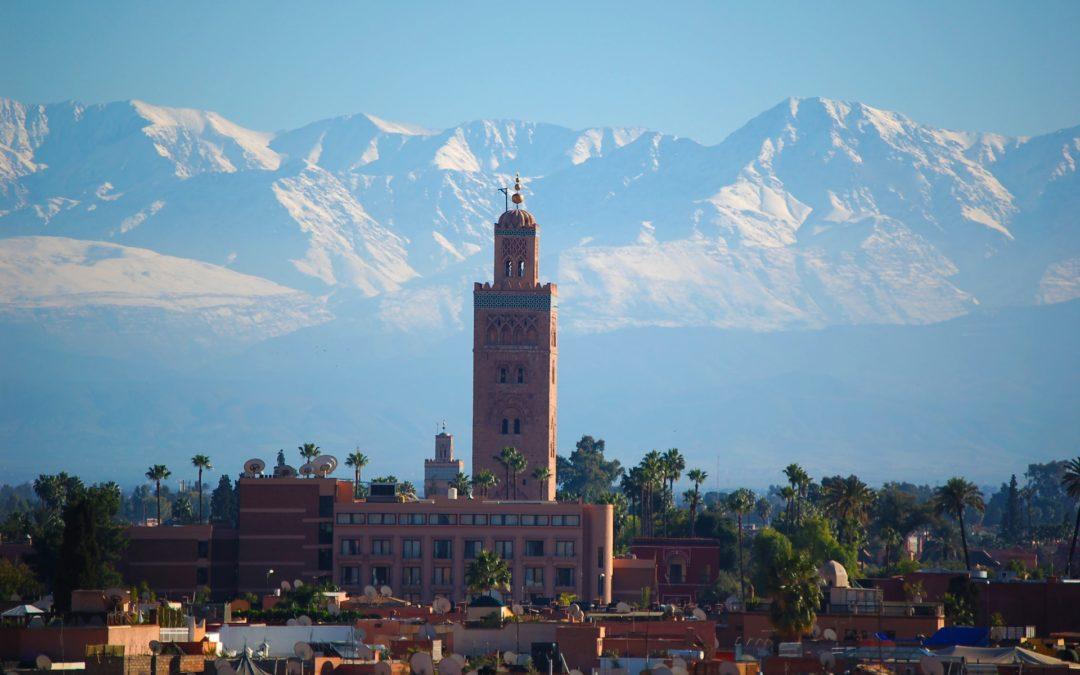Marrakech, often referred to as the “Jewel of Morocco,” exudes an irresistible allure of luxury and mystique. With its famed medinas, resplendent mosques, opulent palaces, and enchanting riads, it’s a city that beckons the curious traveler to delve deeper into its captivating charm. Yet, beneath the surface lies a treasure trove of intriguing secrets that will not only pique your curiosity but also cultivate a profound connection with this extraordinary city. Embark on a journey through the hidden wonders of Marrakech as we unveil 20 fascinating facts that will unveil its captivating essence.
The Most Interesting Facts About Marrakech
1. The Almoravids Founded Marrakech in 1062
The city of Marrakech was indeed founded by the Almoravids in 1062 (other sources say 1070) . The Almoravids were a religious nomadic group who established the city as the capital of their empire, choosing the location on the banks of the Tensift River. This strategic location provided access to water for agriculture and sustenance, making it an important center for trade and culture. The Almoravid dynasty played a significant role in the history of Morocco and Islamic North Africa during the 11th century.
2. The Name “Marrakech” and Its Origins
The name “Marrakech” has an interesting history. It is believed to derive from the Berber (Amazigh) words “amur akush,” (ⴰⵎⵓⵔ ⵏ ⴰⴽⵓⵛ) which means “the land of God.” However, another theory suggests it may come from the Arabic words “murra kish,” meaning “pass by quickly.” The exact origin is debated, but both interpretations reflect the city’s historical and spiritual significance. Marrakech has been a center of Berber culture and Islamic heritage for centuries.
3. Marrakech’s Nickname as the Red City
Marrakech is often referred to as the “Red City” due to the vibrant shade of the walls surrounding its historic district. These walls, made from beaten clay, give the city a warm and earthy reddish hue. This unique feature not only contributes to the city’s distinctive character but also reflects the cultural significance of the color red in Morocco, symbolizing vitality and celebration.
4. The Medina of Marrakech: A UNESCO Heritage Site with Centuries of History
The Medina of Marrakech, a sprawling historical city center that spans an impressive 700 hectares, is a living testament to the rich cultural heritage of Morocco. Dating back to the 11th century, this ancient walled city earned its well-deserved status as a UNESCO World Heritage Site in 1985, making it a must-visit destination for history enthusiasts and travelers seeking an authentic Moroccan experience.This UNESCO designation recognizes the remarkable collection of architectural and artistic masterpieces that grace the labyrinthine alleyways and squares of the Medina. The city’s historic heart is a treasure trove of intricate tilework, intricate carvings, and other artistic expressions that showcase the skill and creativity of the artisans who have called Marrakech home over the centuries. Visitors to the Medina can explore the Koutoubia Mosque, the Saadian Tombs, and the vibrant souks, where traditional crafts, spices, and textiles are sold. These landmarks and the city’s overall ambience provide a profound insight into Morocco’s history, culture, and architectural achievements.
5. Marrakech as an Imperial City
During the Berber Empire, Marrakech served as one of Morocco’s Imperial Cities, or historical capitals. The other three Imperial Cities were Rabat (which is now the capital), Meknes, and Fes. These cities have rich histories, cultural heritage, and architectural landmarks that reflect their historical significance. Today, they remain as key centers of Morocco’s cultural and historical identity.
6. Marrakech’s Position in Morocco
Marrakech is the fourth largest city in Morocco. While it is not the capital (Rabat holds that position), it is also not the largest metropolis, which is Casablanca. Marrakech’s size and historical significance make it a major destination for tourism, trade, and culture within Morocco. The city’s charm, markets, and architectural beauty continue to draw visitors from around the world.
7. Bahia Palace: A Jewel of Marrakech’s Architectural Heritage
The Bahia Palace, an architectural gem in Marrakech, was constructed in two phases by a talented father-son team around the turn of the 20th century. Covering an impressive 19.8 acres, this palace is a stunning example of Moroccan architecture and design, known for its irregular yet harmonious layout.What sets Bahia Palace apart is its intricate craftsmanship, which reflects the affluence and artistry of the time. Visitors are greeted with lush gardens, intricately carved wooden ceilings, vibrant tilework, and beautifully designed courtyards. The palace’s name, “Bahia,” means “brilliance,” and it certainly lives up to its name. The palace offers a glimpse into the opulent lifestyle of the Moroccan elite during the late 19th and early 20th centuries, making it a fascinating visit for those interested in history and architecture.
8. The Koutoubia Mosque: Marrakech’s Iconic Landmark and Spiritual Center
The Koutoubia Mosque’s towering minaret is an unmistakable symbol of Marrakech, and it serves as both a spiritual center and a cultural icon. Standing at an impressive height of 230 feet, this mosque is the tallest structure in the city and one of the largest mosques in Morocco.Beyond its imposing physical presence, the Koutoubia Mosque has deep historical and religious significance. It has been a center of Islamic worship for centuries and is admired for its stunning architecture and ornamentation, featuring intricate geometric patterns, calligraphy, and distinctive arches. The minaret, with its three golden orbs, is an enduring image of the city.The call to prayer, broadcast from the minaret, rings out five times a day, resonating across the city and serving as a reminder of the important role of faith in Moroccan daily life. Visitors are welcome to admire the mosque’s exterior, but non-Muslims are not allowed inside. The Koutoubia Mosque is a vital part of Marrakech’s cultural fabric and a must-see landmark for all who visit the city.
9. Winston Churchill’s Artistic Tribute to the Atlas Mountains
One of the most intriguing aspects of Marrakech’s history is the visit of Winston Churchill and Franklin D. Roosevelt in the midst of World War II. Following the Casablanca Conference, these world leaders took a brief respite in Marrakech. It was during this visit that Winston Churchill, the British Prime Minister and a skilled painter, created a canvas of the Atlas Mountains. The artwork is a testament to the mesmerizing beauty of the Moroccan landscape, particularly the towering Atlas Mountains. It showcases Churchill’s talent as a painter and his appreciation for the stunning natural scenery that surrounds Marrakech. This piece of history adds an artistic and political dimension to the city’s already rich tapestry, making it a unique and fascinating destination for history and art enthusiasts alike.
10. Marrakech’s Strategic Location in Morocco
Marrakech’s geographical location is both fascinating and strategic. The city is situated just 50 miles north of Toubkal, North Africa’s highest peak, in the Atlas Mountains. This proximity to the mountain range makes it a gateway for trekkers and adventurers seeking to conquer Toubkal and explore the breathtaking landscapes of the region.Furthermore, Marrakech is 122 miles northwest of Ouarzazate, known as the gateway to the Sahara Desert. The city’s accessibility to this iconic desert landscape makes it a popular starting point for excursions into the Sahara, offering travelers the chance to experience the unique beauty and culture of the desert.Additionally, Marrakech is located 110 miles east of the port city of Essaouira, renowned for its historic medina and coastal charm. This proximity to Essaouira enables visitors to experience a diverse range of Moroccan landscapes, from the bustling city to the tranquil coastal towns.Marrakech’s strategic location makes it an ideal base for exploring the diverse and captivating regions of Morocco, offering a varied and enriching travel experience.
11. Mint Tea and Couscous: Marrakech’s Traditional Delights
One of the most delightful aspects of Marrakech’s culture is its traditional food and drink. Mint tea and couscous reign supreme in the hearts and taste buds of locals and visitors alike. These two staples are not just everyday menu items; they are a symbol of Moroccan hospitality and a way of life.
Mint tea, known as “atay,” is a beverage that holds a special place in Moroccan society. Brewed with green tea, fresh spearmint leaves, and generous amounts of sugar, it is typically served in small, ornate glasses. This sweet and refreshing drink is an essential part of Moroccan hospitality. When you visit someone’s home or a shop in Marrakech, you’re likely to be offered mint tea as a gesture of warm welcome.
Couscous, on the other hand, is a staple food in Moroccan cuisine. It consists of steamed granules of durum wheat semolina, often paired with succulent stews made from a variety of ingredients like lamb, chicken, vegetables, and spices. Fridays are often designated as “couscous day” in Moroccan households, highlighting the cultural significance of this dish.
Both mint tea and couscous encapsulate the Moroccan way of life, emphasizing the importance of sharing and enjoying a good meal with friends and family. These culinary delights are not only delicious but also a window into the heart and soul of Marrakech’s culture.
12. Preserving Marrakech’s Iconic Palm Trees
Marrakech’s skyline is graced with an abundance of majestic palm trees, creating a unique and picturesque atmosphere in the city. These palms are not just an aesthetic element; they are a crucial part of the local ecosystem. Local authorities in Marrakech have implemented strict measures to protect these emblematic trees.
Cutting down palm trees is strictly prohibited, and those caught doing so face hefty fines. This protective measure is in place to preserve the city’s distinctive character and ensure the well-being of the environment. The palm trees provide much-needed shade and contribute to the city’s oasis-like appearance, making Marrakech an even more inviting and pleasant place to visit.
The decision to protect the palm trees demonstrates Marrakech’s commitment to sustainable urban development and conservation, ensuring that future generations can continue to enjoy the city’s natural beauty.
13. Marrakech’s Vibrant Artisan Traditions
Marrakech boasts a rich history of arts and crafts that have been passed down through generations. This vibrant tradition encompasses a wide range of artistic disciplines, including pottery, textiles, jewelry-making, and woodworking. Artisans throughout the city dedicate themselves to preserving and advancing these ancient crafts.
Pottery in Marrakech is renowned for its intricate and colorful designs. The city’s clay products are skillfully shaped into tagines, bowls, and tiles, often adorned with intricate geometric patterns and vibrant hues.
Textiles in Marrakech are a feast for the eyes, with handwoven carpets and fabrics showcasing bold colors and intricate patterns. The city’s famous souks (markets) are a treasure trove for those seeking unique textiles and garments.
Jewelry-making in Marrakech is another art form that has thrived for centuries. Local artisans use precious and semi-precious stones to create intricate pieces that reflect the city’s rich cultural heritage.
Woodworking is yet another art form with deep roots in Marrakech. Craftsmen create intricate wooden screens, doors, and furniture using traditional techniques.
Marrakech’s artisan traditions not only add to the city’s visual charm but also provide employment opportunities and support local economies. Visitors can explore the bustling workshops and markets to witness these artisans in action, gaining a deeper appreciation for their remarkable skills.
14. The Enchanting Souks of Marrakech
The souks of Marrakech are legendary for their vibrant colors and bustling atmosphere. These bustling markets are an integral part of daily life in the city and offer a sensory overload of sights, sounds, and scents.
The maze-like alleys of the souks are a treasure trove of goods, from spices and textiles to ceramics and traditional Moroccan handicrafts. Visitors can haggle for everything from intricately designed rugs to fragrant spices and artisanal jewelry. The markets are not just a place to shop but also an immersive cultural experience.
The souks’ lively atmosphere, with street performers, musicians, and the enticing aroma of street food, adds to the allure. While wandering through the labyrinthine streets, you’ll encounter a dynamic and ever-changing tableau of Moroccan life.
Navigating the souks can be both exhilarating and overwhelming, so it’s advisable to have a local guide to help you explore this captivating and bustling part of Marrakech.
15. Majorelle Garden: A Haven of Nature and Culture
The Majorelle Garden is a verdant oasis nestled in the heart of Marrakech and is a must-visit for travelers seeking respite from the city’s vibrant chaos. This enchanting garden was designed by the French painter Jacques Majorelle and later restored by fashion icon Yves Saint Laurent.
The garden is home to an impressive collection of plants from around the world, with exotic cacti, palm trees, and lush bamboo groves creating a tranquil and photogenic setting. The cobalt blue buildings and vibrant accents throughout the garden provide a striking contrast to the greenery, making it a paradise for photographers and nature enthusiasts.
Beyond the natural beauty, the Majorelle Garden is also home to the Berber Museum, which houses an exquisite collection of Berber artifacts, jewelry, and textiles. This cultural institution celebrates the rich heritage of the indigenous Berber people, offering visitors a deeper understanding of Moroccan history and traditions.
Majorelle Garden is a serene retreat that seamlessly blends nature, art, and culture. It’s a place to unwind, appreciate the beauty of Morocco, and learn about the enduring Berber culture that has shaped the country’s identity.
16. The Saadian Tombs
The Saadian Tombs are a captivating historical site in Marrakech that dates back to the late 16th century. These tombs remained hidden for centuries and were only rediscovered in 1917. They hold a significant place in Morocco’s history as they serve as the final resting place for prominent figures such as Ahmad al-Mansur, Sultan Moulay Zidan, and Sultan Muhammad al-Sheikh al-Saghir. The intricate decoration and architectural details within the mausoleum complex are awe-inspiring. Visitors are treated to stunning examples of Saadian craftsmanship, featuring beautiful tilework, stucco plasterwork, and marble embellishments. The Saadian Tombs provide a glimpse into Morocco’s rich past and the artistic achievements of the Saadian dynasty.
17. The Ben Youssef Madrasa
The Ben Youssef Madrasa is an architectural gem located in Marrakech, with its roots dating back to the 14th century. This historic site is a testament to the city’s rich Islamic heritage and its commitment to education and artistry. The madrasa boasts intricate tilework and carvings that have been meticulously preserved. Its stunning courtyard, adorned with geometric patterns and calligraphic inscriptions, serves as a tranquil oasis in the bustling city. For centuries, it was a renowned center for Islamic learning, attracting scholars from across North Africa. Today, the Ben Youssef Madrasa is a testament to the architectural and cultural significance of Marrakech.
18. The El Badi Palace
The El Badi Palace, often referred to as the “Palace of Wonder” or “Incomparable Palace,” was once considered one of the most magnificent palaces in the world. Built by Sultan Ahmed al-Mansur in the late 16th century, it stood as a symbol of opulence and power. However, its grandeur was short-lived, as Sultan Moulay Ismail ordered its destruction in 1696, leaving the palace in ruins. Today, visitors can explore the vast, open spaces that remain, and though it may be a shadow of its former self, the palace’s immense scale and the remnants of its intricate designs offer a glimpse into its former glory. A visit to El Badi Palace is a journey into Morocco’s rich history and the consequences of time and politics.
19. Pestana CR7 Marrakech: Where Football Meets Hospitality
The Pestana CR7 Marrakech is a relatively new addition to Marrakech’s hospitality scene and a unique destination for football fans. Founded by the legendary footballer Cristiano Ronaldo, this hotel combines luxury and sports culture, creating an enticing atmosphere for tourists.
The hotel features modern and stylish design, with Cristiano Ronaldo’s personal touch evident throughout the establishment. It’s a hub for football enthusiasts, offering themed rooms, sports memorabilia, and even the opportunity to watch live football matches on big screens. The Pestana CR7 Marrakech is not just a place to stay but an experience for those who admire Ronaldo’s career and want to enjoy the vibrant atmosphere of Marrakech in a contemporary, sports-themed setting.
20. Marrakech’s Thriving Nightlife
Marrakech is not just a city steeped in history; it also boasts a vibrant and lively nightlife scene. In contrast to its daytime charm, the city comes to life after dark. Many bars, clubs, and restaurants remain open until late at night, offering a wide range of entertainment options for locals and tourists. From rooftop bars with stunning views of the city to traditional Moroccan music and dance performances, Marrakech’s nightlife is a dynamic blend of contemporary and traditional experiences. This bustling nightlife scene adds yet another layer of excitement to the city’s cultural tapestry and ensures that there’s always something to do, no matter the hour.
Historical Significance of Marrakech
Nestled in the heart of Morocco, Marrakech, with its captivating history and vibrant culture, stands as a timeless testament to the grandeur of North Africa. This city, renowned for its historical significance, has a storied past that weaves a captivating narrative through the sands of time.
Founded in the 11th century by the Almoravid dynasty, Marrakech emerged as a fortified citadel, strategically positioned to oversee the trans-Saharan trade routes. Its name, which is believed to originate from the Berber words “mur akush” meaning “Land of God,” reflects its cultural and religious significance.
The history of Marrakech is a tapestry of conquests, dynasties, and rulers who left an indelible mark on the city. One of its most iconic landmarks, the Koutoubia Mosque, was commissioned by the Almohad Caliph Yaqub al-Mansur in the 12th century and remains a testament to his architectural prowess. Marrakech’s historical significance was further cemented under the Saadian dynasty, particularly during the rule of Ahmad al-Mansur, who enriched the city with splendid palaces and gardens.
However, it was during the reign of the Alawite dynasty, which began in the 17th century, that Marrakech truly flourished. The city served as the capital of Morocco under the rule of Sultan Moulay Ismail, who undertook extensive infrastructure development and created a legacy of majestic structures. This included the impressive Badi Palace, a symbol of his ambition and extravagance.
Throughout its history, Marrakech has played host to myriad historical events that have reverberated far beyond its walls. The city witnessed the signing of the Treaty of Marrakech in 1790, which marked the beginning of diplomatic relations between Morocco and the newly formed United States of America. This diplomatic milestone highlights Marrakech’s global significance and its role in shaping international relations.
Today, Marrakech thrives as a modern metropolis while retaining its historical charm. Visitors from around the world flock to its bustling medina, where they can wander through labyrinthine alleyways, admiring the architectural marvels of the past. The city’s Jardin Majorelle, designed by French painter Jacques Majorelle and later owned by fashion designer Yves Saint Laurent, is a vibrant oasis that epitomizes the fusion of art and culture that Marrakech offers.
In conclusion, Marrakech stands as an enduring testament to the rich tapestry of Moroccan history. From its Almoravid roots to the cosmopolitan city it has become, Marrakech’s historical significance transcends borders and invites all to immerse themselves in a captivating journey through time. The city’s intricate blend of tradition and modernity makes it an unmissable destination, allowing visitors to experience the captivating history that has shaped this remarkable Moroccan gem.
Read more: Discover Morocco: Culture, Travel & Economy
Read Also: Is Morocco a Rich Country? An Economic Guide
The Most Popular on BitGlint

40 Social Dilemma Examples in the World & Real Life
Social dilemmas are everywhere. They shape the choices we make at work, in our communities, and even on a global...

30 Favor Examples & Definition
Doing a favor means helping someone without expecting anything in return. It’s an act of kindness that can strengthen...

30 Naivety Examples & Definition
Naivety is something most people experience at some point in their lives. It often starts in childhood, but for some,...

20 Chronology Examples & Meaning
Chronology is something we use more than we realize. It shows up in conversations, in how we remember the past, and in...

30 Wishful Thinking Examples & Meaning
Wishful thinking is something we all do at some point. You hope things will turn out fine—even if there’s no real...

20 Examples of Gravity & What Gravity Really Is
Gravity is one of the most important forces in the universe, but many people don’t fully understand what it really is...

20 Examples of Secondary Consumers in the Food Chain
Secondary consumers are animals that eat other animals—usually herbivores that feed on plants. They’re an important...
Get Inspired with BitGlint

